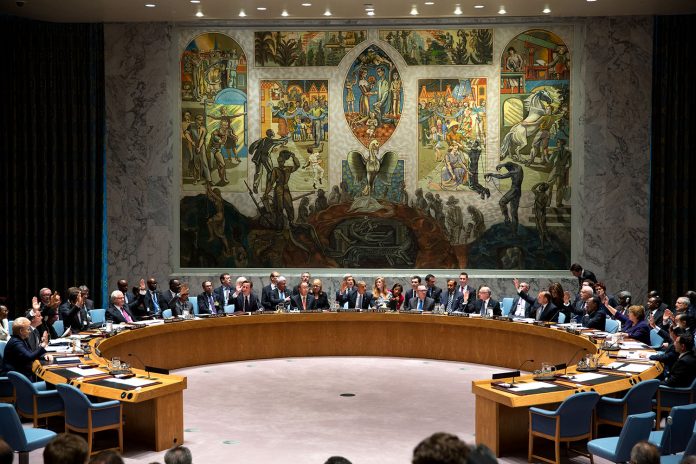The United Nations Security Council met Tuesday to hammer out a response to North Korea’s recent missile tests after US President Barack Obama warned the reclusive state that it was deepening its international isolation.
North Korea test-fired three ballistic missiles into the sea on Monday as world powers gathered for a G20 meeting in China, with leader Kim Jong-Un hailing the tests as “perfect”.
Envoys from France and Japan both called for sending a strong message to Pyongyang as they entered the meeting of the 15-member Security Council.
“We want a united and clear message,” said Japan’s ambassador Koro Bessho.
France’s Francois Delattre called for a “quick and firm reaction” from the council, adding: “The three ballistic missile launches are clear and unacceptable new violations of UN resolutions” and “a threat to regional and international peace and security”.
Pyongyang has conducted a fourth nuclear test and a series of missile tests this year in defiance of UN sanctions, prompting South Korea to announce plans to deploy a US anti-missile system to counter such threats.
Earlier Tuesday, Obama held talks with South Korean counterpart Park Geun-hye on the sidelines of a regional summit in Laos.
“North Korea needs to know that provocations will only invite more pressure and further deepen its isolation,” he told reporters after meeting Park in Vientiane.
Park described the launches as a “reckless provocation (that) will lead North Korea down the path of self-destruction”.
But despite the global chorus of disapproval and tough sanctions, Pyongyang is unrepentant — continuing to ignore the international community’s calls for a halt to its weapons programme.
‘Bolster nuclear force’
The North’s KCNA news agency on Tuesday said Kim personally oversaw Monday’s missile firing which he “appreciated as perfect”.
“He stressed the need to continue making miraculous achievements in bolstering up the nuclear force one after another in this historic year,” the report added.
The North’s top newspaper Rodong Sinmun carried nine photos of the test, including one of a beaming Kim standing in front of a map surrounded by smiling officials.
South Korea’s defence ministry said the tests were of Rodong missiles with a range of 1,000 kilometres (620 miles). It said they had been fired over the Sea of Japan (East Sea) without warning.
The Rodong is a scaled-up Scud variant with a maximum range of around 1,300 kilometres, bringing most of Japan within range.
Melissa Hanham, an expert on North Korea’s weapons programme at the Middlebury Institute of International Studies in California, said it was difficult to determine so far if there had been any technical progress.
“The most obvious difference from the last test is the change in warhead,” Hanham said.
Last month, North Korea fired a submarine-launched ballistic missile from the northeastern port of Sinpo.
That flew 500 kilometres towards Japan, far exceeding the range of the country’s previous sub-launched missiles.
Kim described the August test as the “greatest success” and said it put the US mainland within striking range.
The launch was widely condemned by the US and other major powers, but analysts saw it as a clear step forward for North Korea’s nuclear strike ambitions.
A proven submarine-launched ballistic missile system would allow deployment far beyond the Korean peninsula and a “second-strike” capability in the event of an attack on the North’s military bases.
After his meeting with Park, Obama said if North Korea committed to denuclearisation then the “opportunities for us to dialogue with them are there”.
But he added that Pyongyang’s current behaviour made that impossible.
AFP
